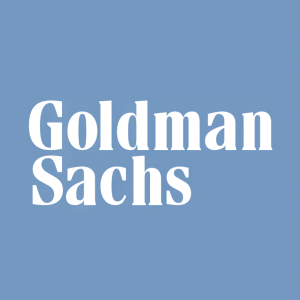[424B2] Goldman Sachs Group Inc. Prospectus Supplement
Rhea-AI Filing Summary
GS Finance Corp., a subsidiary of The Goldman Sachs Group, Inc. (NYSE: GS), is offering $6.34 million of Autocallable S&P 500 Index-Linked Notes due June 25, 2030 under its Series F MTN program. The notes are senior, unsecured obligations of GS Finance Corp. and are fully and unconditionally guaranteed by the parent company.
Principal protection: Investors will receive at least the $1,000 face amount at maturity if the notes are not called, regardless of S&P 500 performance. No downside market risk is therefore embedded.
Automatic call feature: If on the call observation date (22 Jun 2026) the S&P 500 closes at or above the initial level of 5,967.84, the notes are redeemed early for $1,070 (7.0% return) per $1,000 face amount. If not called, they remain outstanding until maturity.
Upside participation after year 1: At maturity investors receive 100% of any positive index return (no cap) in addition to principal. Example: a 25% index gain would pay $1,250.
Economic value: Goldman’s estimated value on trade date is $975 (97.5% of face), reflecting a $25 sales concession amortising through 19 Oct 2025. The original issue price is 100% with a 0.25% underwriting discount; net proceeds of 99.75% accrue to the issuer.
Key risks include: credit risk of GS Finance Corp./Goldman Sachs, no interim interest, early-redemption reinvestment risk, limited secondary liquidity, taxation under contingent payment debt instrument rules, and the fact that the 7% call premium caps total return if the note is called.
The product primarily serves Goldman’s funding needs and offers investors a capital-protected, equity-linked return profile with a one-year 7% call incentive and uncapped upside thereafter, at the cost of liquidity and a 2.5-point issue premium over model value.
Positive
- 100% principal protection at maturity offers downside security for capital-preservation-oriented investors.
- 7% call premium after one year provides an above-money-market short-term return if the S&P 500 is flat or mildly positive.
- Uncapped upside participation (100%) beyond year 1 allows full equity appreciation potential to 2030.
Negative
- Economic value discount: Estimated value (97.5%) is 2.5 points below issue price, creating an immediate mark-to-model loss.
- No interim interest; opportunity cost versus traditional bonds or money-market instruments.
- Liquidity risk: No exchange listing and market-making is discretionary, which may hinder exit before maturity.
- Tax drag: Treated as CPDI; investors accrue taxable income annually without cash flows.
- Credit exposure to GS Finance Corp./Goldman Sachs could impair repayment in a stress scenario.
Insights
TL;DR: Capital-protected note with 7% one-year call; fair for cautious equity exposure but liquidity, pricing and tax drag weigh.
The structure delivers 100% principal protection plus full upside participation if held to 2030, which is attractive for risk-averse investors seeking equity exposure without downside. However, the 7% automatic call after year 1 effectively caps gains if the S&P 500 rises modestly, converting the position into a short-dated deposit. The 2.5-point premium over model value and 0.25% dealer concession reduce economic efficiency, while secondary market making is discretionary. Estimated value of 97.5 implies a 25 bp annualised cost of carry before credit and liquidity premia. Tax treatment under CPDI rules forces investors to accrue income even without cash receipts, further diminishing after-tax returns. Overall market impact on GS is immaterial; for investors, the risk-reward profile is modestly positive if the index outlook is flat-to-up and reinvestment options are limited.
TL;DR: 7% callable buffer plus uncapped upside looks neat, but opportunity cost versus equities and illiquidity are real.
From a portfolio-construction view, this note can replace a portion of core fixed-income where equity beta is desired without drawdown risk. Yet the upside versus direct equity is surrendered if markets rally quickly because of the call. With the Fed funds rate near 4-5%, locking in a zero-coupon structure that may redeem in 12 months at 7% is only mildly compelling versus risk-free T-bills. Credit exposure to GS adds incremental spread risk. Investors must also weigh the long duration (five-year tail) should the index decline during year one, leaving them with little liquidity and no interim yield until 2030. Net: usable as a niche allocation tool, but not a game-changer.








